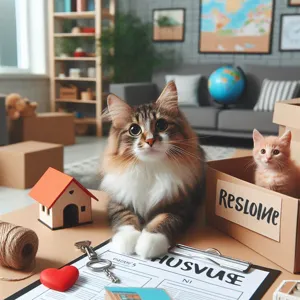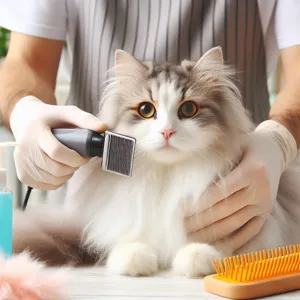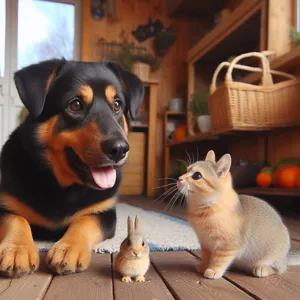Walking your dog should be an enjoyable experience, a time for bonding and exploration, but for many pet owners, it can quickly turn into a chaotic struggle.
Whether you have an exuberant puppy bursting with energy or a more stubborn adult dog, leash training is a crucial skill that lays the foundation for a harmonious relationship between you and your furry friend. In this comprehensive guide, “Leash Training 101,” we will take you through a step-by-step process to teach your dog how to walk calmly by your side, transforming those daily walks into a relaxing and enjoyable adventure. From understanding the right equipment and choosing the perfect treats to employing positive reinforcement techniques, we’ll equip you with everything you need to turn your dog into a well-mannered walking companion. Say goodbye to pulling and lunging, and hello to peaceful strolls filled with wagging tails and happy hearts!
1. Understanding the Importance of Leash Training

Leash training is a fundamental skill that every dog owner should prioritize, not just for the sake of obedience, but for the overall well-being of both the dog and the owner. A well-trained dog on a leash enhances the walking experience, making outings enjoyable rather than chaotic. Understanding the importance of leash training goes beyond teaching your dog to follow commands; it fosters a deeper bond between you and your furry companion while ensuring safety in various environments.
Imagine walking through a bustling park or navigating a busy sidewalk without the worry of your dog pulling you in every direction or lunging at every distraction. Proper leash training provides the tools to manage your dog’s behavior, allowing for smoother interactions with other dogs and people. This not only prevents potentially dangerous situations but also helps your dog develop confidence and social skills in unfamiliar settings.
Moreover, leash training can significantly reduce stress for both you and your pet. A dog that walks calmly by your side is less likely to encounter accidents or become overly excited, leading to a more relaxed atmosphere during walks. This sense of calm can be especially beneficial for reactive dogs, who may struggle with anxiety or aggression in crowded spaces.
In addition, leash training is a critical part of responsible dog ownership. It demonstrates your commitment to ensuring a safe and enjoyable environment for your dog, other pets, and the community at large. By investing time and effort into this essential skill, you contribute to a culture of well-behaved dogs, making public spaces more pleasant for everyone.
Ultimately, understanding the importance of leash training is the first step in creating a positive walking experience that strengthens your relationship with your dog, promotes safety, and enhances your overall enjoyment of your time together. As we delve deeper into the steps of effective leash training, keep in mind that patience and consistency are key, and every small victory counts toward achieving that perfect stroll by your side.
2. Choosing the Right Equipment for Leash Training
When it comes to leash training, the right equipment can make all the difference in ensuring a smooth and effective learning process for both you and your dog. The choices you make in selecting leashes, collars, or harnesses can either facilitate a positive experience or create unnecessary challenges. Here’s a breakdown of what to consider when choosing the best gear for your training sessions.
**Leashes**: Opt for a sturdy, non-retractable leash that provides you with full control over your dog. A standard 4 to 6-foot leash is ideal, offering enough length for your dog to explore while still allowing you to maintain a firm grip. Avoid retractable leashes, as they can encourage pulling and make it difficult to communicate effectively with your dog.
**Collars**: For many dogs, a flat collar works well, but if your pup is prone to pulling, consider a front-clip harness. These harnesses discourage tugging by redirecting your dog’s movement when they pull, making it easier for them to learn proper walking behavior. Ensure that the harness fits snugly without being too tight, as comfort is key to keeping your dog focused during training.
**Training Tools**: Some pet owners find it helpful to use additional training aids, such as head halters, especially for larger or more energetic dogs. Head halters gently guide your dog’s head, which in turn leads the body, making it easier to control their movements. However, introducing a head halter requires patience, as it may take some time for your dog to adjust to wearing it.
**Comfort Considerations**: Regardless of what equipment you choose, comfort is paramount. Look for padded collars and harnesses that won’t irritate your dog’s skin. The last thing you want is for your pet to associate leash training with discomfort, which could lead to resistance or anxiety during walks.
In summary, investing in the right equipment lays the foundation for successful leash training. By selecting sturdy, comfortable, and appropriate tools, you create an environment conducive to learning, allowing your dog to thrive as they master the art of walking calmly by your side.
3. Preparing Your Dog for Training: Basic Commands

Before diving into leash training, it’s essential to equip your dog with a solid foundation of basic commands. These commands not only enhance communication between you and your furry friend but also build their confidence and responsiveness, making the training process smoother and more enjoyable for both of you.
Start with the fundamental commands: **“sit,” “stay,” and “come.”** Teaching your dog to sit on command is a crucial first step—it establishes a sense of calm and focus. Use treats to encourage them; hold a treat close to their nose, then slowly raise it above their head. As their head follows the treat, their bottom will naturally lower. When they sit, reward them with praise and the treat. Repeat this until they can sit reliably with just your verbal command.
Next, introduce the **“stay”** command. With your dog in a sitting position, take a step back while saying “stay.” If they remain in place, return to them and reward them. Gradually increase the distance and duration before rewarding. This command is vital for keeping your dog stationary during walks, especially in busy environments.
The **“come”** command is equally important, as it ensures your dog returns to you when called. Start indoors or in a secure area. Use a cheerful tone and say “come” while gently pulling on the leash or backing away from your dog. When they reach you, celebrate their success with treats and affection. This positive reinforcement builds a strong association with returning to you.
Incorporate these commands into your daily routine, practicing them several times a day. Consistency is key, so ensure that everyone in your household uses the same commands and techniques. By establishing these basic commands, you’ll not only enhance your dog’s obedience but also lay the groundwork for effective leash training, making those walks a pleasurable experience for both of you.
4. Setting Up Your Training Environment
Creating the right training environment is crucial for your dog’s success in leash training. A well-prepared space helps minimize distractions and sets the stage for a focused learning experience. Start by selecting a quiet area free from loud noises, other pets, and bustling foot traffic; this could be your backyard, a quiet park, or even a spacious room in your home. The goal is to provide a serene atmosphere where your dog can concentrate on you and the training exercises.
Next, ensure you have the right equipment on hand. A sturdy, comfortable leash and a properly fitted harness or collar are essential. Opt for a leash that is approximately six feet long; this length gives your dog enough freedom to explore while still allowing you to maintain control. Avoid retractable leashes during training sessions, as they can lead to inconsistent communication and reinforce pulling behavior.
In addition to the physical environment, consider the timing of your training sessions. Choose a time when your dog is alert but not overly energetic or tired. Early morning or late afternoon walks can be ideal, as your dog is likely to be more attentive and responsive. each training session should be kept short—about 10 to 15 minutes—so your dog remains engaged without becoming overwhelmed.
Finally, remember to keep your own energy positive and calm. Dogs are highly attuned to their owner’s emotions and body language. By exuding a relaxed but assertive demeanor, you’ll create a reassuring environment that encourages your dog to learn and adapt. With these elements in place, you’ll be well on your way to successful leash training, paving the way for enjoyable walks together!
5. Step 1: Introducing the Leash and Collar

Introducing your dog to the leash and collar is a pivotal first step in leash training, setting the foundation for a successful walking experience. Begin this process in a calm, distraction-free environment—perhaps inside your home or in your backyard. Here’s how to make this initial introduction as smooth and positive as possible.
Start by allowing your dog to sniff and explore the collar and leash. Use a soft tone and soothing body language to communicate that these new items are not something to fear. If your dog seems hesitant, give them plenty of time to acclimate; patience is key here. Once they’re comfortable, gently place the collar around their neck, ensuring it fits snugly but not too tightly—you should be able to fit two fingers between the collar and your dog’s neck.
Next, attach the leash and let it dangle for a moment, allowing your dog to feel the weight and movement without any pressure. This step is crucial in helping them associate the leash with positive experiences. You can even reward them with treats and praise during this process to create a positive connection.
Once your dog seems relaxed with the collar and leash, take a few steps around the room while holding the leash. Keep the sessions short and enjoyable; you want your dog to associate the leash with fun rather than restriction. If your dog begins to pull or resist, stop walking and call them back to you, rewarding them for returning. This reinforces the idea that staying close to you is beneficial.
As your dog becomes more comfortable, gradually increase the duration of the leash exposure and begin practicing gentle leash handling. Remember, this initial step is all about building trust and creating a positive association with the leash and collar. With a little patience and encouragement, you’ll set the stage for confident leash walking in the steps to come.
6. Step 2: Getting Your Dog Comfortable with Walking on a Leash
Before you embark on your journey of leash training, it’s crucial to ensure that your dog feels comfortable and safe while wearing a leash. This step lays the foundation for a successful walking experience and helps your furry friend associate the leash with positive experiences.
Begin by introducing the leash in a relaxed environment, free from distractions. Allow your dog to sniff and explore the leash, letting them become familiar with its texture and weight. You might even toss in a treat or two to create a positive association. Once they seem relaxed, gently clip the leash onto their collar or harness. Don’t rush this process; take your time to let your dog adjust to the sensation of having something attached to them.
Once your dog is wearing the leash comfortably, it’s time to practice walking around your home or backyard. Start by encouraging them to move alongside you, using treats and praise to reinforce desired behavior. If they pull or try to dart away, stop walking and wait for them to return to your side. This teaches them that the leash only allows movement when they’re walking calmly beside you.
As they get more comfortable, gradually increase the length of your walks and introduce them to different surfaces, sounds, and smells. This desensitization will help your dog build confidence, making them less likely to become anxious or overwhelmed during future walks. Remember, patience is key. By ensuring that your dog feels secure and happy with the leash, you’re setting the stage for a smooth transition to more structured leash training in the upcoming steps.
7. Step 3: Teaching Basic Loose-Leash Walking

Teaching your dog the art of loose-leash walking is a pivotal step in ensuring enjoyable strolls together, free from the tug-of-war that often leads to frustration for both you and your furry friend. In this step, we’ll delve into the techniques that can transform your walks from chaotic to calm, allowing your dog to meander by your side with ease and composure.
Start in a quiet area with minimal distractions, such as your backyard or a tranquil park. Equip yourself with a comfortable and well-fitted harness or collar and a sturdy leash—preferably one that is around six feet long. The key to loose-leash walking lies in creating a positive association with the leash and the space around you. Begin by holding the leash loosely in your hand, ensuring that there’s enough slack for your dog to move without feeling restricted.
Next, use treats to engage your dog’s attention. With a few tasty morsels in your pocket, call your dog to your side using a cheerful tone. When your dog is walking alongside you, shower them with praise and rewards. This positive reinforcement will help them understand that staying close to you is a desirable behavior.
If your dog starts to pull ahead, stop immediately. Stand still and ignore any attempts they make to tug you forward. Once they return to your side or loosen the tension on the leash, reward them with a treat and resume walking. This teaches them that pulling will only delay their progress and that calmness is the key to moving forward.
Consistency is essential, so practice this routine regularly. As your dog becomes more comfortable with loose-leash walking, gradually introduce slight distractions, like other people or pets, to help them learn to maintain focus even in busier environments. Remember to be patient; mastering loose-leash walking can take time, but with persistence and a positive attitude, you’ll both enjoy the fruits of your labor—peaceful walks filled with exploration and connection.
8. Step 4: Implementing Positive Reinforcement Techniques
Once you’ve established a consistent routine and your dog is beginning to understand what is expected of them during walks, it’s time to introduce positive reinforcement techniques. This crucial step not only fosters a stronger bond between you and your furry companion but also creates a more enjoyable walking experience for both of you.
Positive reinforcement is rooted in the principle of rewarding desired behaviors to encourage their repetition. When your dog walks calmly by your side, the key is to acknowledge that behavior immediately. Use treats, praise, or a favorite toy to reward your dog when they maintain a loose leash and stay close to you. For instance, if your dog walks beside you for a few steps without pulling, stop, kneel down, and offer a treat along with enthusiastic praise. This creates a clear association in their mind: walking calmly is a behavior that earns them rewards.
It’s important to ensure the rewards are enticing enough to capture your dog’s attention. High-value treats, like small pieces of chicken or cheese, can be particularly effective at this stage, especially if your dog tends to get distracted by the sights and sounds around them. As you progress, you can begin to fade the treats, transitioning from frequent rewards to intermittent ones. This helps maintain your dog’s interest and encourages them to continue walking calmly without relying solely on treats.
Additionally, consider using a clicker to mark the exact moment your dog exhibits the desired behavior. The sound of the clicker is a clear signal that they’ve done something right, followed by a reward. This technique not only enhances your dog’s understanding but also adds an element of fun to the training process.
Remember, patience is key during this stage. If your dog becomes distracted or starts to pull, gently redirect them back to your side using a calm voice and a treat. Avoid harsh corrections or frustration; instead, focus on consistency and encouragement. With time and practice, your dog will learn that walking calmly by your side leads to positive outcomes, making each outing a delightful adventure for both of you.
9. Step 5: Handling Distractions and Interruptions
### 9. Step 5: Handling Distractions and Interruptions
As you progress in your leash training journey, you’ll soon realize that the world is full of distractions—other dogs, moving vehicles, intriguing scents, and even the occasional squirrel darting by. Learning to navigate these interruptions without losing focus is a crucial step in ensuring your dog walks calmly by your side. Here’s how to tackle this challenge effectively.
Start by establishing a solid foundation of focus and attention during your training sessions. Use a quiet environment at first, where distractions are minimal. As your dog becomes more comfortable walking calmly beside you, gradually introduce mild distractions. This could mean training in a busier park or on a sidewalk with more foot traffic.
When distractions occur, the focus is on your dog’s reaction. If they pull or lunge towards the distraction, calmly redirect their attention back to you. Use treats or their favorite toy to regain focus, rewarding them for maintaining their attention on you rather than on the distraction. Phrases like “look at me” or “focus” can become cues that reinforce this behavior.
Consistency is key. If your dog is particularly reactive to certain distractions, practice desensitizing them in a controlled manner. For example, if they get overly excited by other dogs, find a distance where your dog can observe without becoming overwhelmed. Reward them for staying calm and gradually decrease that distance over time, reinforcing positive behavior as they learn to remain focused on you.
Additionally, practice leash handling techniques that help manage interruptions. If a distraction approaches, use a short leash to keep your dog close and prevent sudden lunges. This not only gives you better control but also helps your dog understand that they should remain close to you, reinforcing the idea that you are their primary focus.
Remember, patience is paramount. Distractions are a natural part of any walk, and each dog will respond differently. With time, practice, and a little creativity, you’ll teach your furry friend how to navigate the world without losing their cool or straying from your side. Embrace the process, and soon enough, your dog will be a model of calmness, even in the face of the most tempting interruptions.
10. Step 6: Practicing in Different Environments
Once your dog has mastered walking calmly on a leash in a familiar setting, it’s time to take the training up a notch by practicing in different environments. This step is crucial for reinforcing your dog’s good behavior while introducing them to new distractions. After all, a calm walk through a quiet neighborhood is one thing, but you want your furry friend to maintain that composure even amidst the bustle of a busy park or the chaos of a pet-friendly outdoor market.
Start by choosing a variety of settings that will challenge your dog in different ways. For instance, the local park, a busy street, or even a pet store can provide a rich tapestry of sounds, sights, and smells that may tempt your dog to pull or become overly excited. Begin with environments that are moderately stimulating; this could mean visiting a park during off-peak hours when there are fewer people and dogs around. Allow your dog to acclimate to the new surroundings before you begin walking.
As you walk, keep your leash loose and maintain a steady pace, rewarding your dog with treats and praise for staying by your side. If they become distracted or start to pull, gently redirect their attention back to you. Use this opportunity to reinforce the commands you’ve been practicing, such as “heel” or “let’s go.” Be patient and consistent, as it may take several sessions in each new environment for your dog to feel comfortable and focused.
Gradually increase the level of distraction by visiting busier places. This is where the real training begins! Your dog will encounter other dogs, people, bicycles, and even the occasional squirrel. Each new challenge is an opportunity for growth, as you teach your canine companion how to remain calm and relaxed despite the excitement around them.
Consistency is key—make these outings a regular part of your routine. Not only will this help your dog adapt to various environments, but it will also strengthen your bond as you navigate the world together. By the time your dog confidently walks by your side in a variety of settings, you’ll both feel a sense of accomplishment, paving the way for enjoyable adventures to come.
11. Troubleshooting Common Issues (Pulling, Lunging, etc.)
Leash training can sometimes feel like a game of tug-of-war, especially when faced with common challenges such as pulling, lunging, or excessive barking. But don’t worry—every dog owner encounters these hurdles, and with patience and the right approach, you can address them effectively.
**Pulling** is one of the most frequent issues dog owners encounter. When your pup sees a squirrel dart past or catches a whiff of something intriguing, the instinct to bolt forward can easily take over. To combat this, consider using a front-clip harness or a head collar, which can help redirect their attention back to you. When your dog begins to pull, stop walking immediately. This teaches them that pulling doesn’t lead to progress. Once they relax and the leash slackens, reward them with treats or praise, and continue walking. Consistency is key here; the more they learn that calm behavior leads to movement, the more they’ll be willing to walk beside you.
**Lunging** can be more challenging, especially if your dog is excited about other animals or people nearby. When you notice your dog gearing up to lunge, try to redirect their focus with a quick command or treat. Practicing desensitization is also beneficial—expose your dog to the stimulus at a distance where they remain calm, rewarding them for staying composed. Gradually decrease the distance over time, reinforcing positive behavior as you get closer to the trigger.
**Barking** on a leash can be another frustration, often stemming from excitement or fear. If your dog barks at passing cars, joggers, or other dogs, it can be helpful to desensitize them to these distractions. Use treats to create a positive association with the stimulus. For example, if your dog sees another dog and barks, calmly redirect their attention to you and offer a treat when they stop barking. Over time, they’ll learn that remaining calm yields the best rewards.
Remember, patience is essential in leash training. Celebrate small victories, and don’t hesitate to seek professional guidance if needed. With consistent practice and positive reinforcement, you’ll transform your walks from chaotic to calm, creating a more enjoyable experience for both you and your furry friend.
12. Consistency and Patience: Key Components of Success
When it comes to leash training your dog, consistency and patience are not just buzzwords; they are the cornerstones of a successful training journey. Imagine embarking on this adventure with your furry friend, and remember that just like humans, dogs thrive on routine and clear expectations. This means setting aside dedicated time each day to practice walking together, regardless of how busy life gets. Consistency in your training schedule—whether it’s a short session every morning or an evening stroll—reinforces good behavior and helps your dog understand what is expected.
Patience, on the other hand, is crucial. Dogs, much like people, have their own learning curves. Some may pick up commands and cues quickly, while others may require more time to grasp the concept of walking calmly by your side. It’s essential to remain calm and composed during training sessions. If your dog pulls on the leash, instead of yanking them back or showing frustration, take a deep breath and gently guide them back to your side. Celebrate small victories, like a few steps of walking together without pulling, to build their confidence and encourage progress.
Incorporating positive reinforcement, such as treats and praise, further emphasizes the behaviors you want to encourage. Remember, every dog is unique, and what works for one may not work for another. By maintaining a consistent routine and exercising patience, you’ll foster a trusting relationship with your dog and create a calm, enjoyable walking experience for both of you. Embrace the journey, and soon enough, you’ll find that your dog is not only walking calmly by your side but also enjoying every moment spent together.
13. Gradually Increasing Duration and Distance
Once your dog has mastered the basics of leash training and is responding well to your cues, it’s time to gradually increase the duration and distance of your walks. This step is crucial as it helps build your dog’s stamina and reinforces the idea that walking calmly on a leash is not just a short-lived activity but a regular part of their routine.
Start by extending your walks by just a few minutes at a time. If your dog is comfortable with a 10-minute walk, try adding two or three more minutes to this. Pay close attention to their behavior during these longer sessions. Are they still focused on you, or are distractions starting to pull them away? If you notice your dog becoming overly excited or distracted, it’s a sign that you might be pushing too hard too soon. In this case, shorten the duration and gradually work back up to longer walks.
When it comes to distance, gradually explore new routes that offer varying sights and smells. Start with familiar areas where your dog feels secure, then slowly introduce them to new environments. Remember, the goal is to keep the experience positive, so don’t rush; let your dog acclimate to each new distance and location at their own pace.
Throughout this process, continue to reward your dog with praise, treats, or even their favorite toy when they walk calmly beside you. This positive reinforcement will help solidify their good behavior and encourage them to remain focused, even as the scenery changes. By gradually increasing duration and distance, you’ll not only enhance your dog’s leash manners but also strengthen the bond between you two, making walks an enjoyable experience for both of you.
14. Maintaining Good Behavior: Ongoing Training Tips
Once your dog has mastered the basics of leash training, the journey doesn’t end there. Maintaining good behavior requires ongoing commitment and consistent reinforcement. Just like us, dogs thrive on routine and can easily forget their training if it’s not regularly practiced. Here are some essential tips to ensure your pup remains a well-mannered walking companion.
**1. Reinforce Positive Behavior:** Consistently reward your dog for walking calmly by your side. Use treats, praise, or even playtime as incentives. The more positive reinforcement they receive, the more likely they are to repeat those good behaviors. Consider having a few high-value treats on hand during walks to keep their motivation high.
**2. Incorporate Short Training Sessions:** Incorporate short training sessions into your daily routine. Spend a few minutes each day practicing loose-leash walking in your backyard or a quiet area. These short bursts of training help reinforce the desired behavior without overwhelming your dog.
**3. Vary Your Routes:** To keep things interesting for your dog and prevent boredom, vary your walking routes. New sights, sounds, and smells can help maintain their engagement and excitement during walks. This variety also allows you to practice leash manners in different environments, which enhances their adaptability.
**4. Be Patient and Consistent:** Training is a marathon, not a sprint. Be patient with your dog as they continue to learn and grow. Consistency is key; make sure everyone in your household is on the same page with commands and expectations. This unified approach will help your dog understand what’s required of them, no matter who is holding the leash.
**5. Address Setbacks Promptly:** If you notice any undesirable behavior creeping back in, such as pulling or lunging, address it immediately. Go back to your training basics, reinforcing good behavior and redirecting any negative actions. This proactive approach will help prevent bad habits from becoming ingrained.
**6. socialization Opportunities:** Regularly expose your dog to new environments and other dogs. Socialization plays a crucial role in reinforcing good behavior on the leash. The more opportunities your dog has to encounter distractions in a controlled manner, the better they will learn to focus on you despite the excitement around them.
In conclusion, maintaining good behavior while leash training your dog is an ongoing process that requires patience, consistency, and plenty of positive reinforcement. By incorporating these ongoing training tips into your routine, you’ll not only keep your dog well-behaved during walks but also strengthen the bond you share with your furry friend. With time and dedication, those peaceful strolls by your side will become a cherished part of your daily life together.
15. Celebrating Milestones: Building a Stronger Bond with Your Dog
Celebrating milestones in your leash training journey is not just a way to acknowledge progress; it’s an opportunity to deepen the bond you share with your dog. Every small victory is a testament to the hard work, patience, and dedication that you both invest in this process. Whether it’s successfully navigating a busy street without pulling, mastering the “heel” command, or simply enjoying a calm walk in the park, each milestone deserves recognition.
Begin by setting achievable goals throughout your training. Maybe it’s walking a certain distance without distractions or practicing in new environments. Once you and your dog reach a milestone, take a moment to celebrate it! This could be as simple as showering your dog with praise, giving a tasty treat, or enjoying an extra-long play session. Positive reinforcement not only rewards your dog but also reinforces the behaviors you want to see in the future.
Consider creating a “training diary” to document your dog’s progress. This can be a fun way to track achievements and reflect on how far you’ve come together. Include dates, notes on your training sessions, and even photos of your adventures. The act of recording these moments will help you appreciate the journey and provide a tangible reminder of your dog’s growth.
Additionally, don’t forget to celebrate the bond you’re building. Training is a collaborative effort, and recognizing the effort both you and your dog put in fosters trust and companionship. Spend time engaging in activities your dog loves outside of training, like playing fetch or exploring new trails. These shared experiences will not only reinforce your training but also create cherished memories that strengthen your relationship.
In essence, by celebrating milestones, you transform the training process into a shared adventure. You’re not just teaching your dog to walk calmly by your side; you’re also building a lifelong partnership based on trust, respect, and love. Each celebration, big or small, lays another stone in the foundation of that bond, making every step of the journey worthwhile.
In conclusion, leash training your dog is not just about getting them to walk calmly by your side; it’s about building a strong bond of trust and communication between you and your furry friend. By following the step-by-step techniques outlined in this guide, you can transform your walks from chaotic struggles into enjoyable adventures. Remember, patience and consistency are key—celebrate each small victory along the way, and don’t hesitate to revisit earlier steps if needed. With time and dedication, you’ll not only enhance your dog’s walking experience but also strengthen your relationship, making every outing a joyous occasion. Now, grab that leash, head out the door, and embark on a new chapter of peaceful strolls together!




































